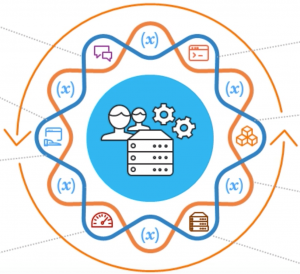Here’s What a Real DevOps Toolchain Looks Like

When we talk about DevOps toolchains, I sometimes wonder how many people really get what we’re talking about. I don’t know if it’s just semantics or tone or something else, but sometimes think it just sounds like buzzword sausage.
So it’s always good to hear it from a customer who’s making a living with DevOps toolchains.
Anyone can jump from one tool into another. Anyone can email or text information around. So what’s the big deal?
A Customer DevOps ToolChain
We define a toolchain as the ability to connect systems, move data, and involve people without jumping from tool to tool. We got a glimpse into how that happens in a DevOps use case last month when satellite communication developer ViaSat sat down with us last month.
One small part of the ViaSat toolchain is the use of JIRA and Ansible.
As Network Solutions Engineer Chris Crocco told us, ViaSat can open a JIRA ticket if they have a critical issue or a blocker to a DevOps sprint. Once someone is assigned to the ticket, xMatters sends a notification to that person, and all the details and comments that are part of the resolution process are logged in the JIRA ticket.
And who puts them there? No one. That’s the beauty of it.

A DevOps toolchain.
“And the advantage that we’re seeing with that particular use case is that whoever the person is who’s actually working that issue and assigned that issue isn’t having to pivot into a JIRA ticket in addition to receiving the xMatters notification,” Chris told us. “They can receive the notification from xMatters, work the issue, provide a response from xMatters, and all of that is going back into the JIRA ticket without that person being required to pivot into the JIRA platform itself.”
ViaSat is performing similar tasks in its Continuous Integration/Continuous Deployment pipeline.
Chris said several teams have written playbooks so if there are failures that might be network or customer-impacting, xMatters sends a notification to an on-call resource for the team that owns that deployment. “So they can go back in, make sure that the rollback was successful, or manually implement the changes that were intended from that playbook,” he said in our webinar.
And by the way, it’s isn’t just processes that seem better. Chris told us that using toolchains, ViaSat has reduced average response times for IT incidents from 10 minutes to 30 seconds! That’s a 95% improvement!
For more information, watch the full on-demand webinar with ViaSat.

Watch the ViaSat DevOps toolchain on-demand webinar.
